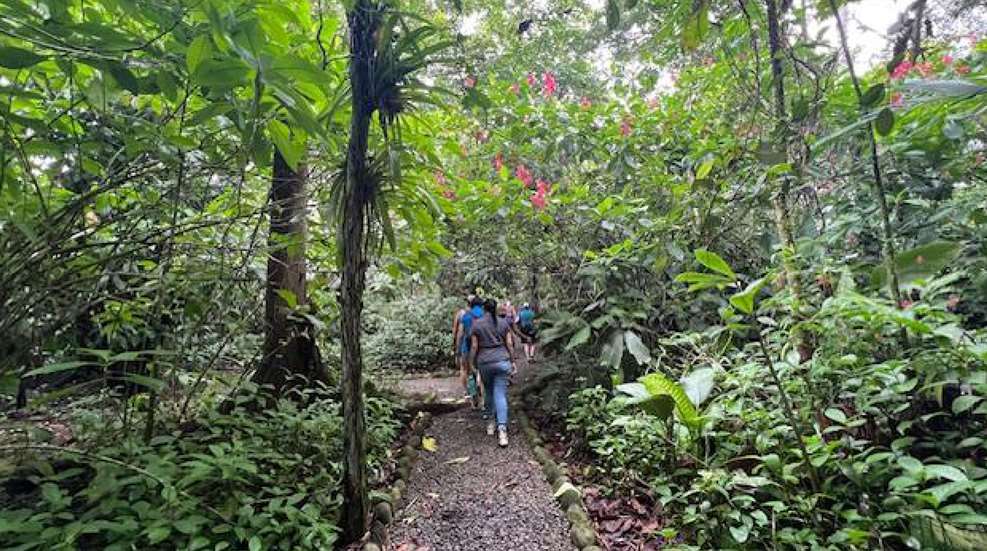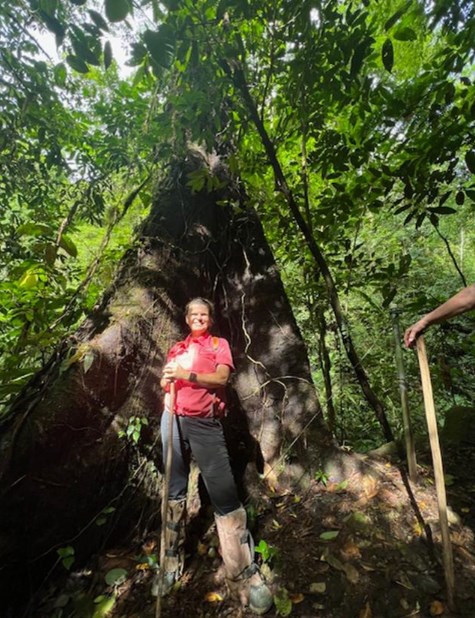Take a Hike!
With more than 60,000 miles of trails in the National Trail System across 50 states, there is no reason to NOT take a hike!
by HEIDI LYN RAO posted on November 17, 2023
NEWS, LIFESTYLE, EVENTS, CONCEALED CARRY
Support NRA Women DONATE

November 17 is “National Take a Hike Day.†With more than 60,000 miles of trails in the National Trail System across 50 states, there is no reason to NOT take a hike!
In 1966, the Bureau of Outdoor Recreation released a report called “Trails for America,†which stemmed from President Lyndon B. Johnson’s call for a cooperative program to build public trails in both urban and backcountry areas. This study made recommendations for a network of national, park and forest trails to be built for recreational opportunities for the public. On Oct. 2, 1968, President Johnson signed into law and authorized the completion of the National Trails System Act, which established a framework for a national system of scenic, historic and recreational trails. The system is administered by the National Park Service, the U.S. Forest Service, and the Bureau of Land Management. The National Trail System consists of three main categories of trails: National Scenic Trails, National Historic Trails, and National Recreation Trails.

National Scenic Trails
National Scenic Trails (NSTs) are lengthy trails that span across some of the most scenic, beautiful, and diverse landscapes in the country. The Appalachian Trail, which stretches over 2,000 miles and is one of the most famous long-distance hiking trails in the world. It runs along the Appalachian Mountain Range through 14 states from Georgia to Maine and is the most user-friendly. The Pacific Crest Trail extends approximately 2,650 miles from the U.S.—Mexico border to the U.S.—Canada border. This trail passes through the most diverse ecosystems of the West Coast to include deserts, forests and mountain ranges. The Continental Divide Trail follows the Continental Divide along the Rocky Mountains, covering about 3,100 miles from the U.S.—Mexico border to the U.S.—Canada border. The North Country Trail is the longest of the National Scenic Trails, covering more than 4,500 miles across seven northern states from North Dakota to Vermont.
National Historic Trails
National Historic Trails (NHTs) follow historic routes or pathways that trace significant historical events and movements in American history. The Oregon Trail played a crucial role in the westward expansion of the United States during the 19th century. It stretched more than 2,000 miles from Missouri to Oregon and was used by pioneers seeking a new life on the western frontier. The Lewis and Clark NHT follows the route taken by the Expedition from Illinois to the Pacific Coast, led by Meriwether Lewis and William Clark who explored the newly acquired Louisiana Purchase territory in the early 1800s. The Santa Fe NHT follows the historic trade route between Missouri and Santa Fe, New Mexico, which was a vital commercial and cultural link between the U.S. and the Mexican provinces of Santa Fe.
National Recreation Trails
National Recreation Trails (NRTs) are a diverse category of trails within the National Trail System. These trails are designated for a variety of recreational activities and are often located in both urban and rural settings. These trails can be used for activities such as hiking, biking, climbing, and horseback riding. The Billy Goat Trail in Maryland is located near Washington, D.C. and offers a challenging hike along the Potomac River with rocky terrain and stunning views, popular among hikers and rock climbers. The Ice Age National Scenic Trail in Wisconsin is popular for hiking, snowshoeing, and cross-country skiing, highlighting glacial landscapes of the state.
Before our modern comforts of transportation, hiking was the norm for many of the generations before us in search of food, water, shelter or work. Today, hiking is a great way to exercise, build muscles, increase stamina, and is a great stress-reducer. The motivation to go outdoors and hike draws us to a variety of places. Maybe your destination is a beach, waterfall, wilderness area, a valley, mountain peak, challenging landscape across changing elevations, or a sunrise walk through your neighborhood. No matter the reason, find your inspiration to spend quality time outdoors. Whether you are a beginner or are experienced in your outdoor adventures, hiking offers unlimited opportunities to fit all skill levels.

Spending time outdoors, in nature, and engaging in physical activity can have positive effects on mental health. Hiking is known to reduce stress, alleviate anxiety, and improve one’s mood. By “unplugging†from your screens and phone, tablet, laptop, tv, and every other electronic device we so frequently rely upon, hiking allows you to connect with nature and immerse yourself in it. Being outdoors and taking in the fresh air and natural sunlight naturally contributes to better respiratory health and production of Vitamin D. And at the end of the day, any level of physical activity, especially in natural settings, can contribute to a better quality and more restful night’s sleep.
While National Take a Hike Day may seem like a straightforward day of observance, here are some interesting facts that add to this outdoor celebration:
- National Take a Hike Day is observed annually on November 17—the time of year often providing cool and crisp fall weather in many regions, making it an ideal time for hiking.
- November is a transitional month, marking the shift from fall to winter in the northern hemisphere. Hiking during this time allows people to enjoy the changing colors of the trees or an early glimpse of winter.
- Research shows that hiking increases dopamine, the hormone that results in happiness;
- The national sport of Switzerland is hiking.
- The hiking capitol of the United States is Portland, Oregon.
- The hiking capitol of the world is Cape Town, South Africa.
- Hiking is found to improve your mood and thereby promote mental well-being.
- Hikers have reduced risks of succumbing to heart diseases, blood pressure, and cholesterol levels.
- Hiking is great for muscle coordination and flexibility.
- You could reduce body fats, improve bone density, and maintain a healthy weight with hiking.
- Many communities organize group hikes, trail clean-ups, or educational events on National Take a Hike Day to encourage local participation among outdoor enthusiasts.
- This day underscores the importance of connecting with nature and fosters a sense of stewardship toward the great outdoors.
- In recent years this day has gained popularity on social media platforms … share your adventures using the hashtag: #NationalTakeAHikeDay
National Take a Hike Day is a day dedicated to encouraging people to get outdoors and explore nature by going on a hike. Find a local trail, community recreation area, state or national park, or just the sidewalks throughout your neighborhood and embark on a journey. It’s a great way to stay active, enjoy the tranquility of nature, take a break from the hustle and bustle of daily life, and connect with the great outdoors!
